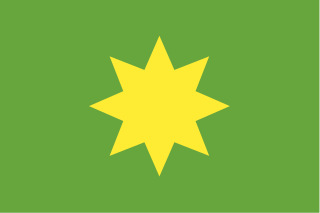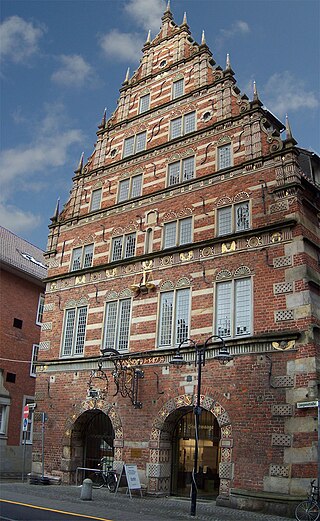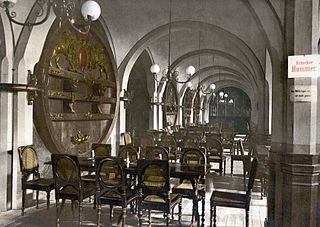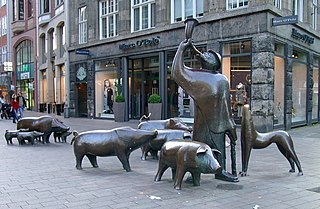Self-guided Sightseeing Tour #2 in Stadtgebiet Bremen, Germany
Legend
Guided Free Walking Tours
Book free guided walking tours in Stadtgebiet Bremen.
Guided Sightseeing Tours
Book guided sightseeing tours and activities in Stadtgebiet Bremen.
Tour Facts
5.9 km
126 m
Experience Stadtgebiet Bremen in Germany in a whole new way with our free self-guided sightseeing tour. This site not only offers you practical information and insider tips, but also a rich variety of activities and sights you shouldn't miss. Whether you love art and culture, want to explore historical sites or simply want to experience the vibrant atmosphere of a lively city - you'll find everything you need for your personal adventure here.
Individual Sights in Stadtgebiet BremenSight 1: Hohentorspark
The Hohentorspark is located in Bremen in the district of Neustadt, district Hohentor.
Sight 2: Three Triangles
The sculpture Three Triangles, also known as Outdoor Piece for Bremen, is located in Bremen's Neustadt at the north end of the Teerhof. It is listed in the list of monuments and statues of the city of Bremen.
Sight 3: Weserburg Museum für moderne Kunst
The Weserburg is a modern art museum in Bremen, Germany. Opened in 1991, it is located on the Teerhof peninsula next to the River Weser in an old factory building which was almost completely destroyed in the Second World War. Originally known as "New Museum Weserburg Bremen", it was Europe's first "collectors' museum", in that it conserves no permanent collection but mounts changing exhibition of private collections. It is one of the largest modern art museum spaces in Germany.
Sight 4: Der Rufer
The Caller is a bronze sculpture by Gerhard Marcks. It stands at the Schlachte in Bremen in front of the Weserhaus of Radio Bremen.
Sight 5: Loriot-Sofa

The Loriot sofa as a bronze monument is a sculpture in Bremen-Mitte in front of the entrance to the Radio Bremen broadcasting centre on Diepenau. It was erected in 2013 and commemorates Vicco von Bülow, whose television series Loriot was created by Radio Bremen.
Sight 6: Architektenkammer der freien Hansestadt Bremen / Ingenieurkammer der freien Hansestadt Bremen
The architect's house in Bremen-Mitte in the old town, Geeren 41–43, is the headquarters of the Bremen Chamber of Architects.
Sight 7: Fangturm
In the 10th century, only the cathedral district was walled as a cathedral castle. From 1229 onwards, a ring wall was built around the entire old town, semicircular on the land side. In the 13th century, Bremen expanded westwards. From 1307 onwards, the new Stephanivorstadt was given a wall on the land side only. In the 15th century, the first brick phase of Bremen's architectural history, the city wall on the Weser side in the port areas of Schlachte and Tiefer was successively replaced by the gable sides of brick warehouses, so that only the battle gates remained of the original wall at Schlachte. The Stephaniviertel, on the other hand, did not receive a wall on the Weser side until the middle of the 16th century. After that, in 1551, the wall between the old districts and the Stephaniviertel was able to fall.
Sight 8: Steinkammern
The house Schlachte 36 in Bremen-Mitte, also Langenstraße 72, is one of the most important buildings in Bremen.
Sight 9: Argo-Haus
The Argo Reederei was an important German shipping company based in Bremen. The focus of the activities was the scheduled service within Europe, in particular the trip to Finland, Great Britain and the Levant.
Sight 10: Suding und Soeken
The Suding & Soeken building is a gabled house at No. 28 Langenstraße in Bremen, Germany. Referred to as a Kaufmannshaus or Kontorhaus, it is one of the city's few historic merchant houses to survive the war undamaged. It is noted for its projecting Renaissance bay window and its two-tiered Baroque stairway ascending from the hallway.
Sight 11: Essighaus

The Essighaus was an impressive gabled town house in the old town of Bremen in northern Germany. One of the city's finest examples of Renaissance architecture, it was almost completely destroyed by bombing in 1943. The entrance flanked by projecting bay windows is the only part of the building which has been restored.
Sight 12: Stadtwaage
The Stadtwaage at No. 13 Langenstraße in Bremen (Germany) is the building in which the municipal weighing scales used to be housed. The facility was created in order to levy taxes and excise duties while protecting merchants and customers against fraud and dishonesty.
Sight 13: Pferdebrunnen
This list of fountains in the city of Bremen lists the fountains and gargoyles in the Free Hanseatic City of Bremen. Some of them have been removed from their original location, relocated, redesigned or destroyed over the decades. This is noted under the status attachment. Monuments and statues are expressly not listed.
Sight 14: Ratskeller
The Bremen Ratskeller is the council wine cellar of the Townhall of Bremen. Since it was erected in the year 1405, German wines were stored and sold there. With its history over 600 years the Ratskeller of Bremen is one of the oldest wine cellars of Germany, furthermore the oldest wine barrel of Germany, a wine from Rüdesheim which is dated 1653, is stored here.
Sight 15: Unser Lieben Frauen
The Church of Our Lady is an Evangelical Protestant church situated northwest of the Market Square in Bremen, Germany. Like Bremen Cathedral, today's building dates from the 13th century. The brightly coloured stained-glass windows are the work of the French artist Alfred Manessier. In 1973, the church was listed under the monument protection act.
Sight 16: Helmuth von Moltke
The Moltke monument in Bremen is located on the wall of the north tower of the Church of Our Lady. In the form of an equestrian statue, it commemorates the Prussian Field Marshal Helmuth von Moltke. The monument was built according to a model by the Munich sculptor Hermann Hahn with the assistance of the Berlin architect Heinrich Jennen and has been a listed building since 1973.
Sight 17: Marcus-Brunnen
The Marcus Fountain in Bremen-Mitte is located in the Liebfrauenkirchhof. It was inaugurated in 1909 and has been a listed building since 1973.
Wikipedia: Marcus-Brunnen (Liebfrauenkirchhof) (DE), Website
Sight 18: Mall of Fame
Mall of Fame is the unofficial name of a pedestrian zone in Bremen, Germany. It runs under the glass roof of the 250-metre-long Lloyd Passage in the centre of the Hanseatic city.
Sight 19: Bessel-Ei
This list of monuments and statues of the city of Bremen lists the monuments, statues, statues, memorials and sculptures of the Free Hanseatic City of Bremen. Some of them have been removed from their original location over the decades, relocated, redesigned or even destroyed. This is noted under the status attachment.
Wikipedia: Liste der Denkmale und Standbilder der Stadt Bremen (DE)
Sight 20: Ansgar-Säule
The Ansgar Column is a bronze monument in Bremen-Mitte, on the Ansgari churchyard on Obernstraße. It was erected in 1965 and is listed in the list of monuments and statues of the city of Bremen.
Sight 21: Ansgarii-Torhaus
The list of cultural monuments in Bremen-Mitte lists all cultural monuments in the Bremen district of Mitte.
Wikipedia: Liste der Kulturdenkmäler in Bremen-Mitte (DE), Website
Sight 22: Rehbrunnen / Hildebrandbrunnen

The Rehbrunnen, also known as the Hildebrandbrunnen, is located in the Mitte district of Bremen in the Bremer Wallanlagen near the Herdentorswallmühle. The fountain is a listed building.
Sight 23: Schweinehirt und seine Herde
The Swineherd and His Herd is a bronze group of figures in Bremen-Mitte at the end of Sögestraße near the streets Am Wall and Herdentorsteinweg. It was erected in 1974 and is listed in the list of monuments and statues of the city of Bremen.
Sight 24: Katharinenkloster
St Catherine's Monastery in Bremen, Germany, was founded in 1253 by the Dominicans. Today traces of its existence remain in the area of the Katharinenstraße and Katharinenklosterhof in the old town.
Sight 25: Fischrestaurant Knurrhahn & Restauration und Bierhalle H. Beckröge
The fish restaurant Knurrhahn is located in Bremen, Mitte district, Katharinenstraße 15/corner of Schüsselkorb. It was built in the Renaissance and is one of the oldest buildings in Bremen.
Sight 26: Aufgehender Mond
The Rising Moon is a sculpture in Bremen-Mitte in front of the entrance façade of the former post office 5, An der Weide 50, near Bremen Central Station. It is listed in the list of monuments and statues of the city of Bremen.
Sight 27: Postamt 5
The Bremen 5 post office, also known as the main post office 5, was the central building of the Hanover Postal Directorate near the main railway station in Bremen and for many years one of the largest buildings in the Hanseatic city. From 1996 onwards, large parts of the house stood empty for a long time and were only partially used.
Sight 28: Focke-Windkanal

Focke's wind tunnel is a fully operational wind tunnel in the former private laboratory of the aviation pioneer Henrich Focke (1890–1979), co-founder of Focke-Wulf and designer of the first fully controllable helicopter, the Focke-Wulf Fw 61. Henrich Focke built the laboratory in 1960 at the age of 70 in the city of Bremen. Until shortly before his death, in 1979, Focke continued aerodynamic studies in slow flight characteristics and the stability problem of helicopters. The rediscovery of his aerodynamic laboratory, together with its wind tunnel was regarded as a sensation for science and technology. Since 2004, the technical monument Focke Flight Laboratory is protected by law.
Share
How likely are you to recommend us?
Disclaimer Please be aware of your surroundings and do not enter private property. We are not liable for any damages that occur during the tours.
GPX-Download For navigation apps and GPS devices you can download the tour as a GPX file.





















